
Even though the Migration is the focus of almost every game drive at the moment, there is still heaps going on in the grasslands of the Mara. This week we introduce the Sausage Tree lion pride, take you on a balloon flight and throw in a selection of other images easily captured whilst on safari at Angama Mara. I also stress the importance of context and ‘location setting’ when building a collection of safari photographs.

Of course, at this time of the year the focus is on the numerous crossing points along the Mara River. To see a river crossing you need to be patient – very patient - and the rewards are truly astonishing. Once the first wildebeest takes to the water, the rest seemingly and mindlessly follow… [f 8.0, 1/320, ISO 125, -0.33]
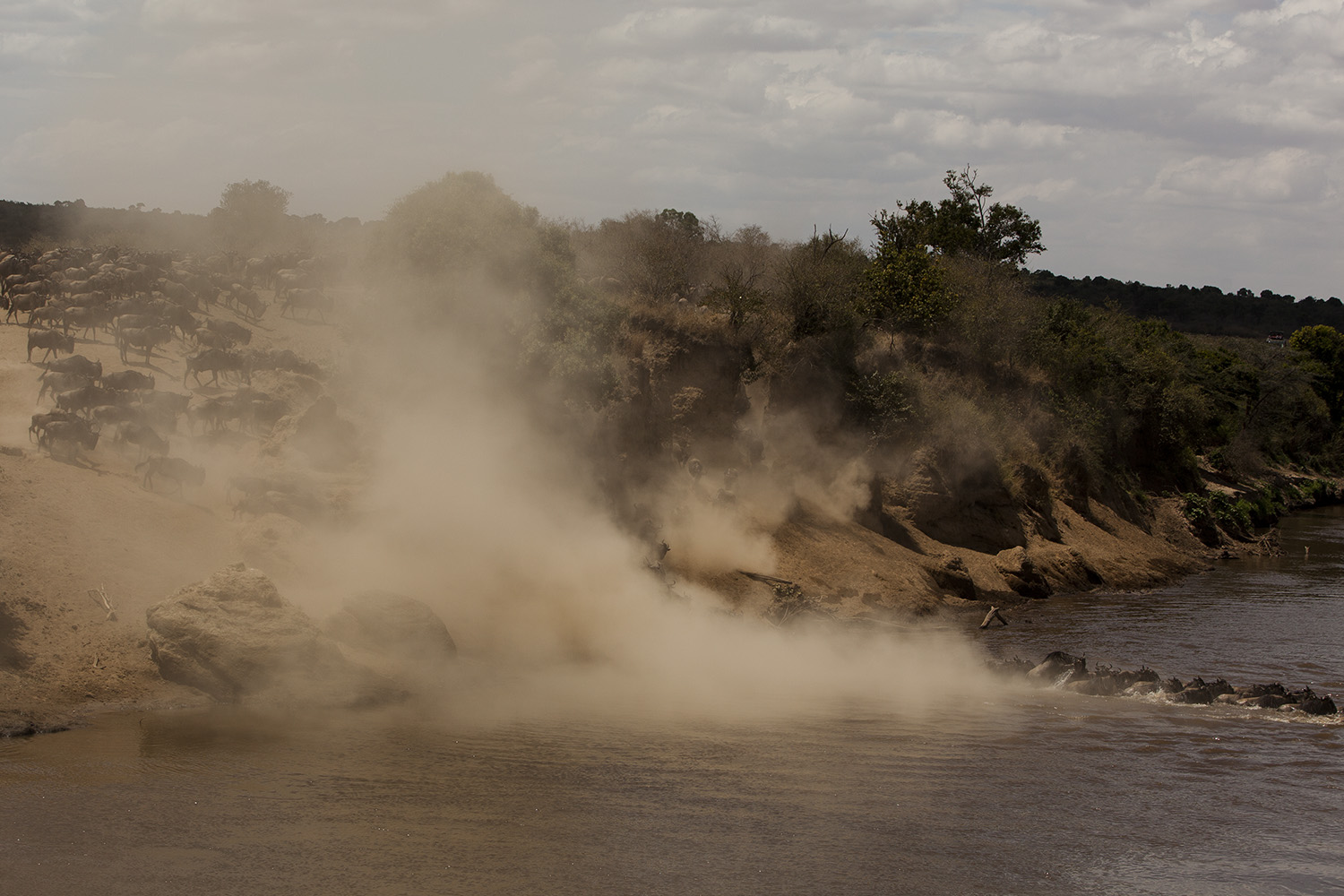
My favourite crossings are not the crocodile dominated ones where death and carnage ensue. Instead, I prefer a dusty crossing. Dramatic scenes both when zoomed out, and when zoomed in. [f 8.0, 1/320, ISO 125, -0.33]

I must admit when I saw this situation developing I had flashbacks of June’s monthly winning photograph in The Greatest Maasai Mara Photographer of the Year competition. Unknowingly I had found myself in what must have been the near exact location and set of circumstances as to when Ketan Khambhatta pressed the shutter on what has become an ionic photograph of the Great Migration. Mine was by no means in the same class, but it is fun to see the similarities between the two photos. [f 8.0, 1/800, ISO 200, +0.33]

What made Ketan’s photograph so fantastic are the two very different scenes unfolding in the same image. The relaxed zebra drinking in the foreground and the chaotic wildebeest and dust in the background. Our camera settings were remarkedly similar. We both had it on ISO 200 due to the crossings taking place in the bright midday sun. His shutter speed however was significantly faster as he needed to capture the wildebeest leap in focus. He did this by opening the aperture up to f5.6. The wildebeest in my shot were moving slowly and so I did not need as fast a shutter speed, hence the reason why I opted for a smaller aperture of f 8.0. To see the monthly winners click here [f 5.6, 1/2000, ISO 200]
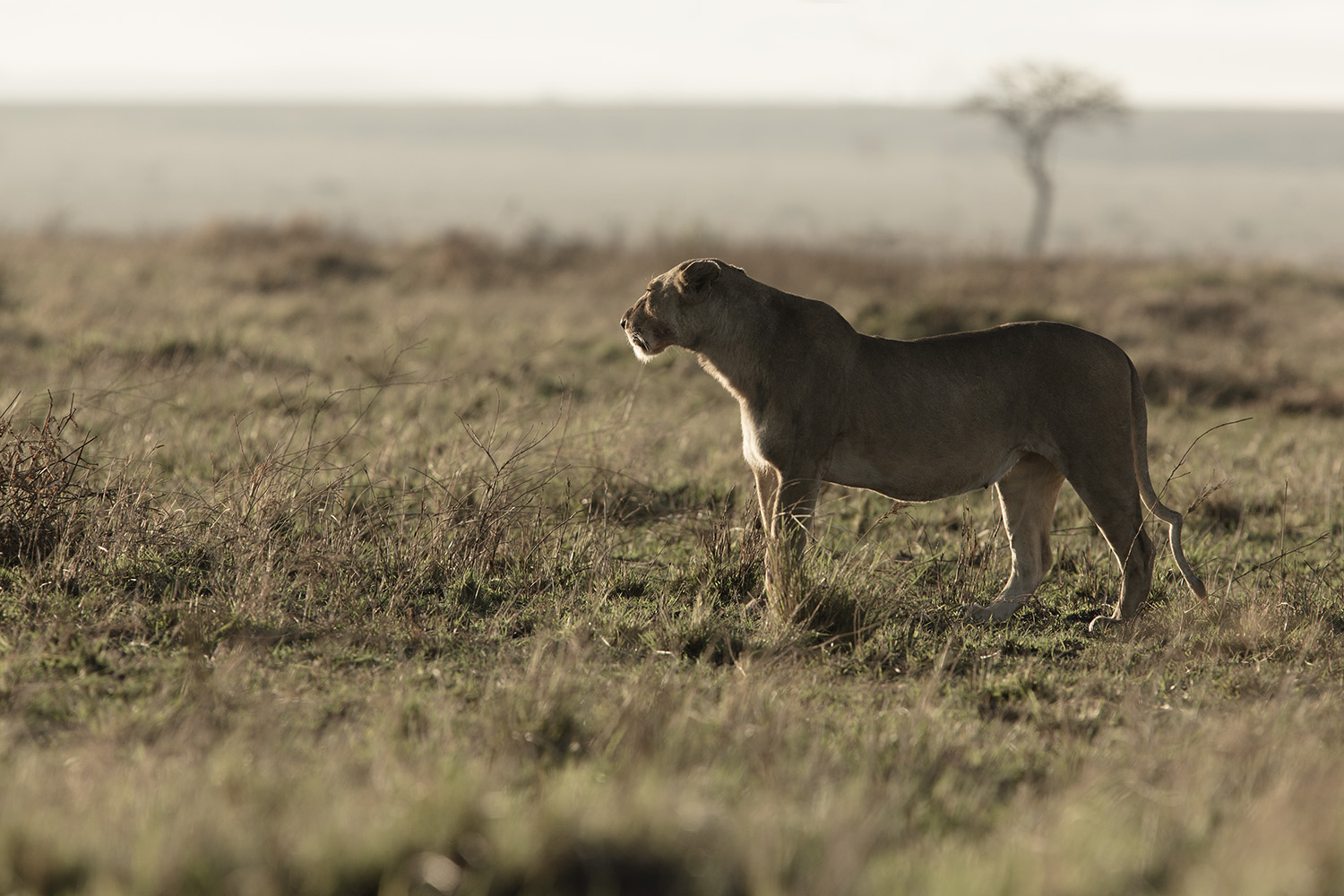
Introducing you to members of one of the Mara Triangle’s most famous lion prides, the Sausage Tree pride. Led by the iconic kinky tail female this pride occupies huge tracts of the south western Triangle, specifically prevalent along the base of the Oloololo escarpment. The cause of the characteristic kink in her tail is unknown. [f 5.6, 1/800, ISO 400]

Two members of the Sausage Tree pride greet in a touching nose-to-nose ceremony. [f 5.6, 1/800, ISO 400]
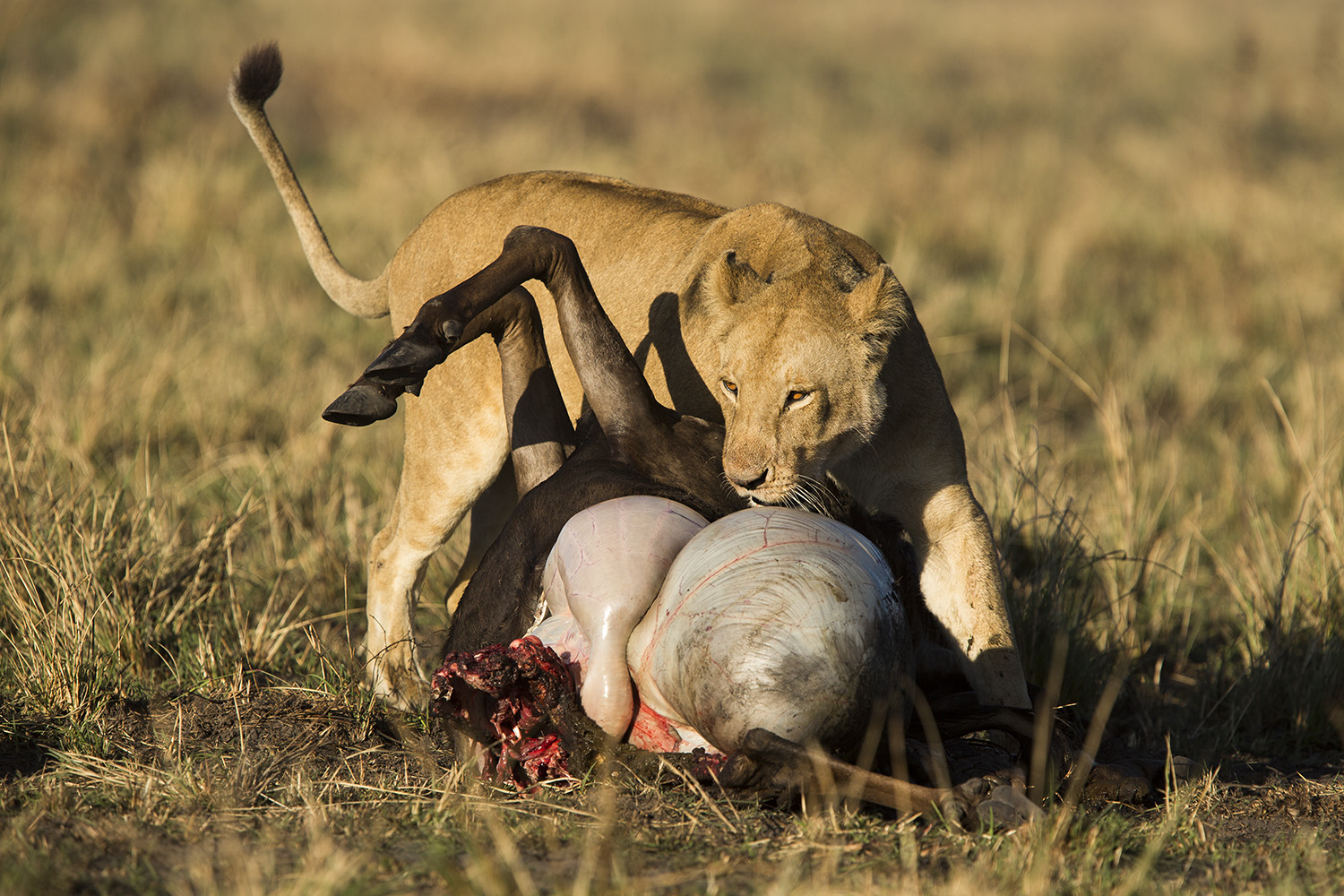
With large tracts of their territory having been burnt about 5 weeks ago (see TWAA 24) the green grasses have sprouted and the wildebeest and zebra are flocking in. This provides great hunting opportunities for the pride. [f 5.0, 1/1600, ISO 250]

There are probably about 9 lion prides using the Mara Triangle currently. I estimate there to be about 12 large males controlling these prides. One of the big males currently often being viewed near Angama Mara is this male. Although not in control of the Sausage Tree Pride he and his brother are the dominant rulers of the Angama Pride. [f 4.5, 1/250, ISO 640, -0.33]

Where possible it is always a good idea to get context shots – the opportunity to show the viewer where you are and how we as visitors fit into the animal’s domain. Zoom out and capture the entire scene. [f 8.0, 1/100, ISO 100, -0.33]
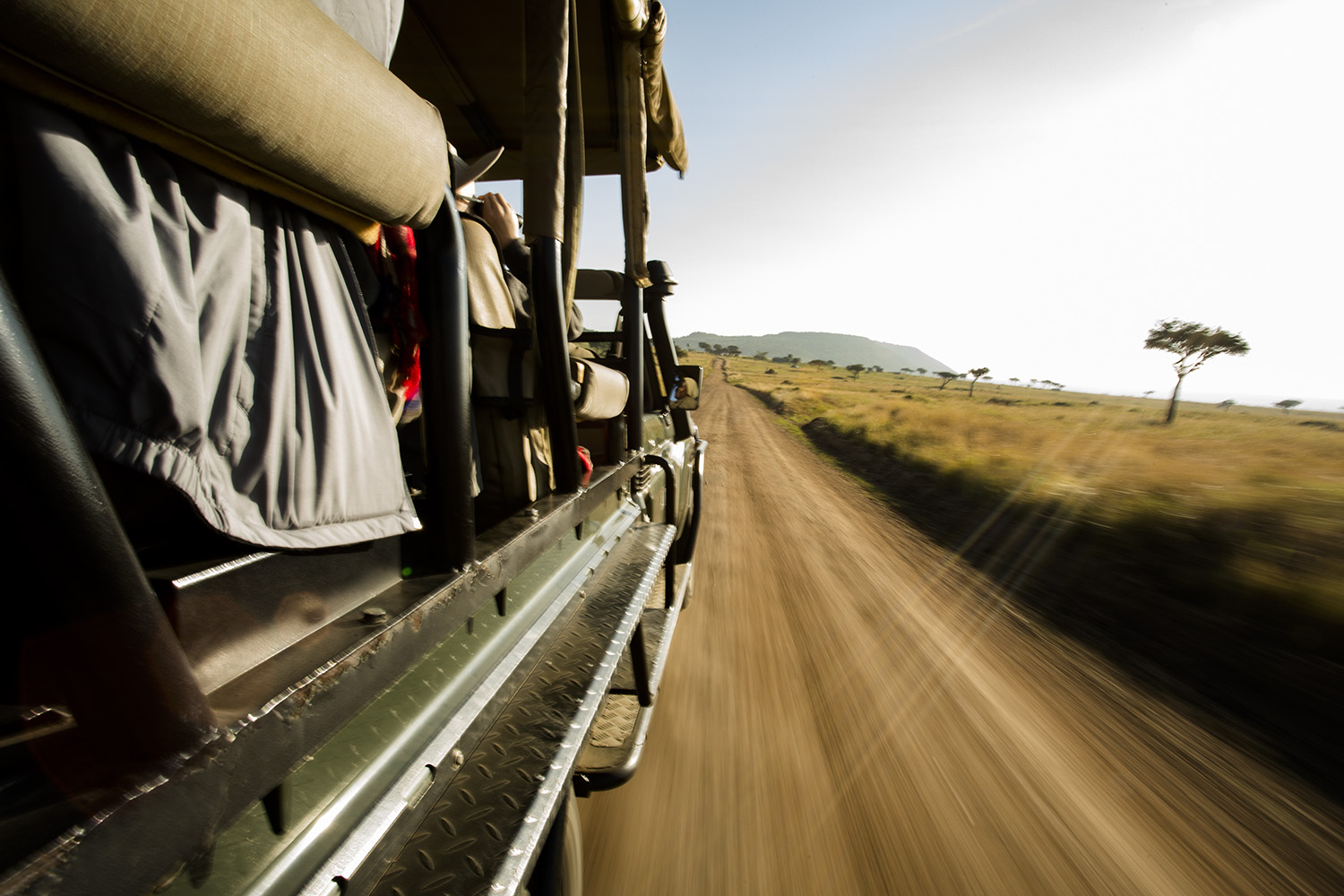
Using shutter priority and slowing it all down, try shooting some creative images showing what it is like being on a safari. [f 22.0, 1/25, ISO 400, +0.67]
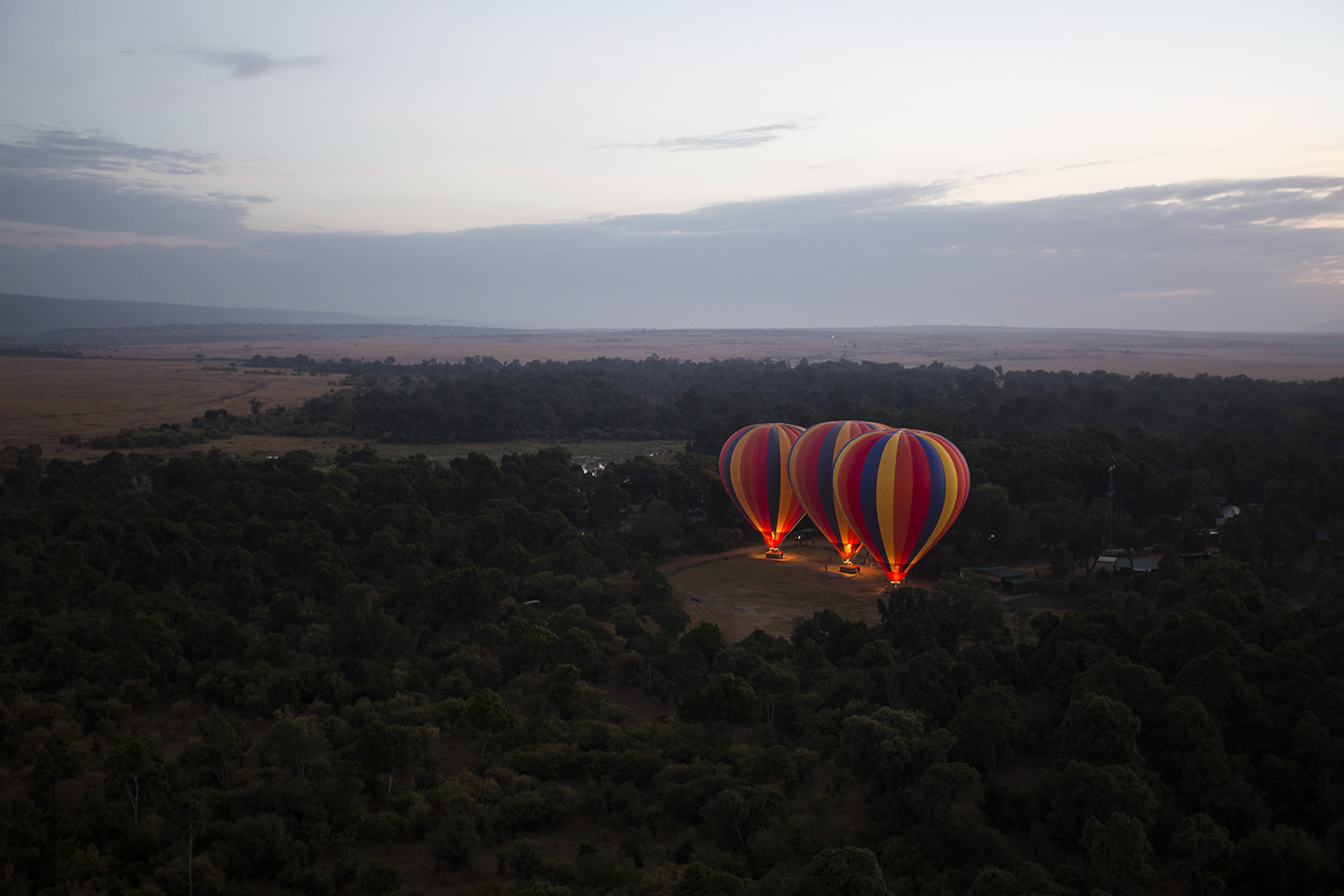
A flight in a hot air balloon offers a unique perspective of the landscape below and is a great way to build on your collection of photos. It provides context and adds so much to your safari gallery. It sets the scene and shows where you are. [f 4.0, 1/60, ISO 800, -0.67]

The moment the sun peaks its head above the horizon, the Mara truly sparkles to life. This is one of my favourite balloon shots I have taken. It tells a story of serenity, silence and beauty. [f 4.0, 1/320, ISO 500, +0.67]

Meanwhile sunrises back at camp are not too shabby either. Rather than simply photographing the sunrise I encourage you to try put something in the foreground that allows you to place where the photo was taken. Here I used the John Vogel chaises on the South Camp deck. [f 5.6, 1/640, ISO 500]
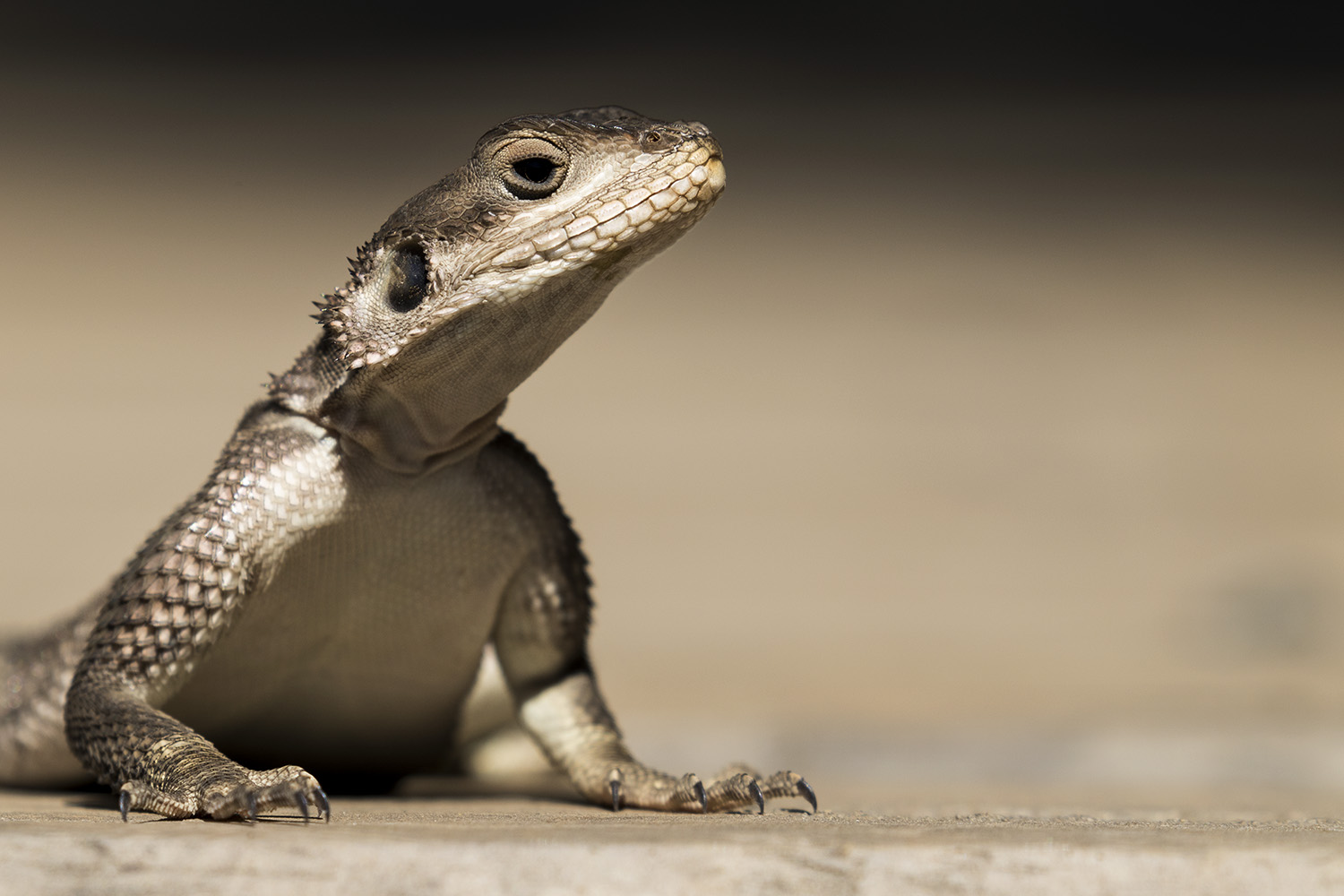
The newest arrival to the Photographic Studio (my office) is a female Agama lizard. She appears to have taken a liking to sleeping behind my computer where I imagine it is warm. We have nicknamed her Babs and I follow her daily movements with interest. Please can she have babies. [f 8.0, 1/640, ISO 160]
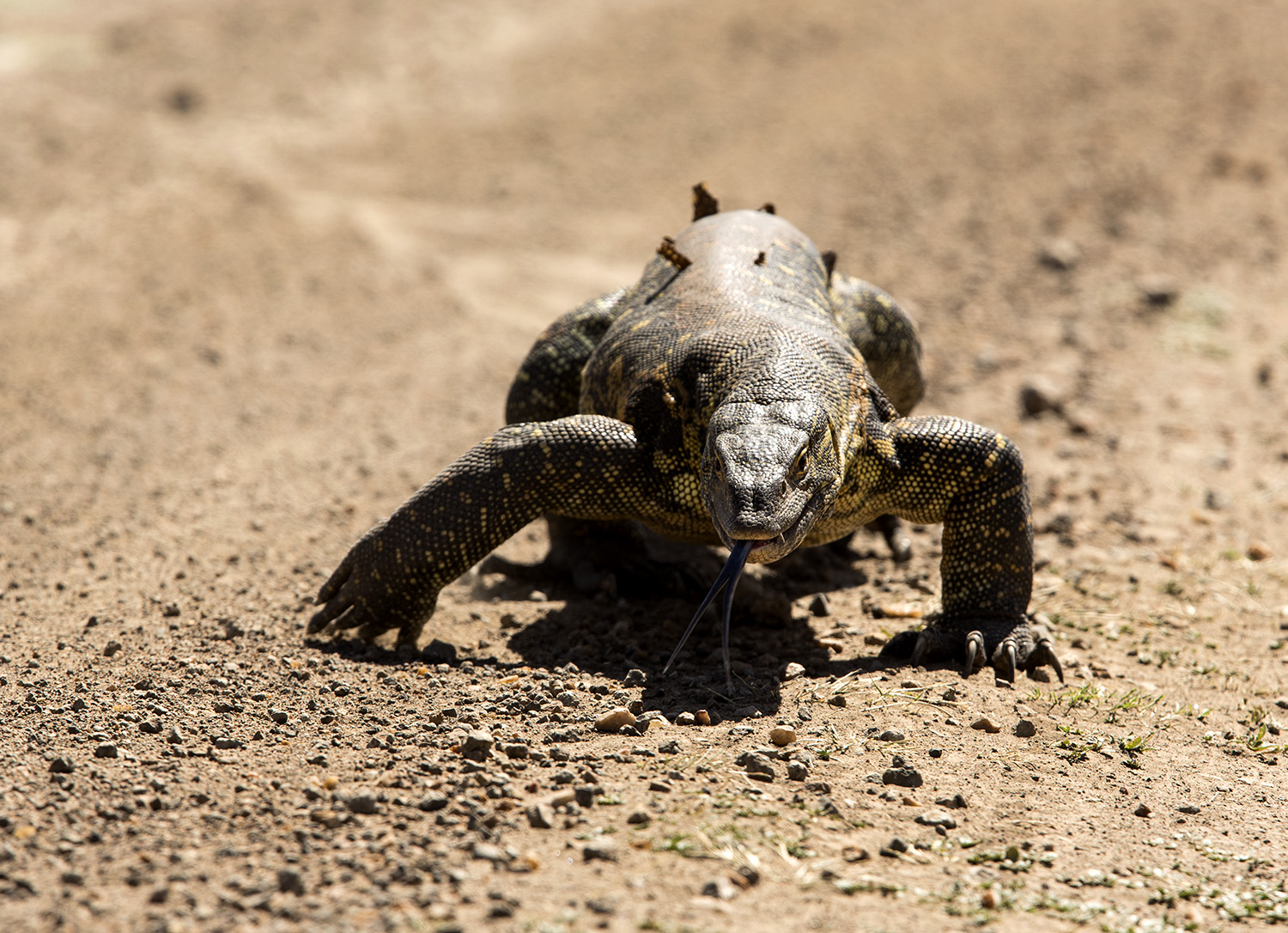
Thank goodness this lizard hasn’t moved into the Studio. Here a large Water Monitor lizard clambers along the path like a monster straight out of Godzilla. The difficulty in this shot came in the extremely harsh midday back lighting and trying to capture the fast flicking tongue and the body movement. What would have made this photograph better would have been a lower eye – level angle. [f 6.3, 1/500, ISO 160, +0.33]

Remember you don’t always need to show the entire animal. Sometimes just a portion does the trick. [f 4.0, 1/640, ISO 500, +0.33]

What makes this a fun photo is the fact that it is unusual to see a landscape orientation of a tall thin animal where the head comes out from the side of the frame rather than the bottom. [f 6.3, 1/250, ISO 250, +1.0]
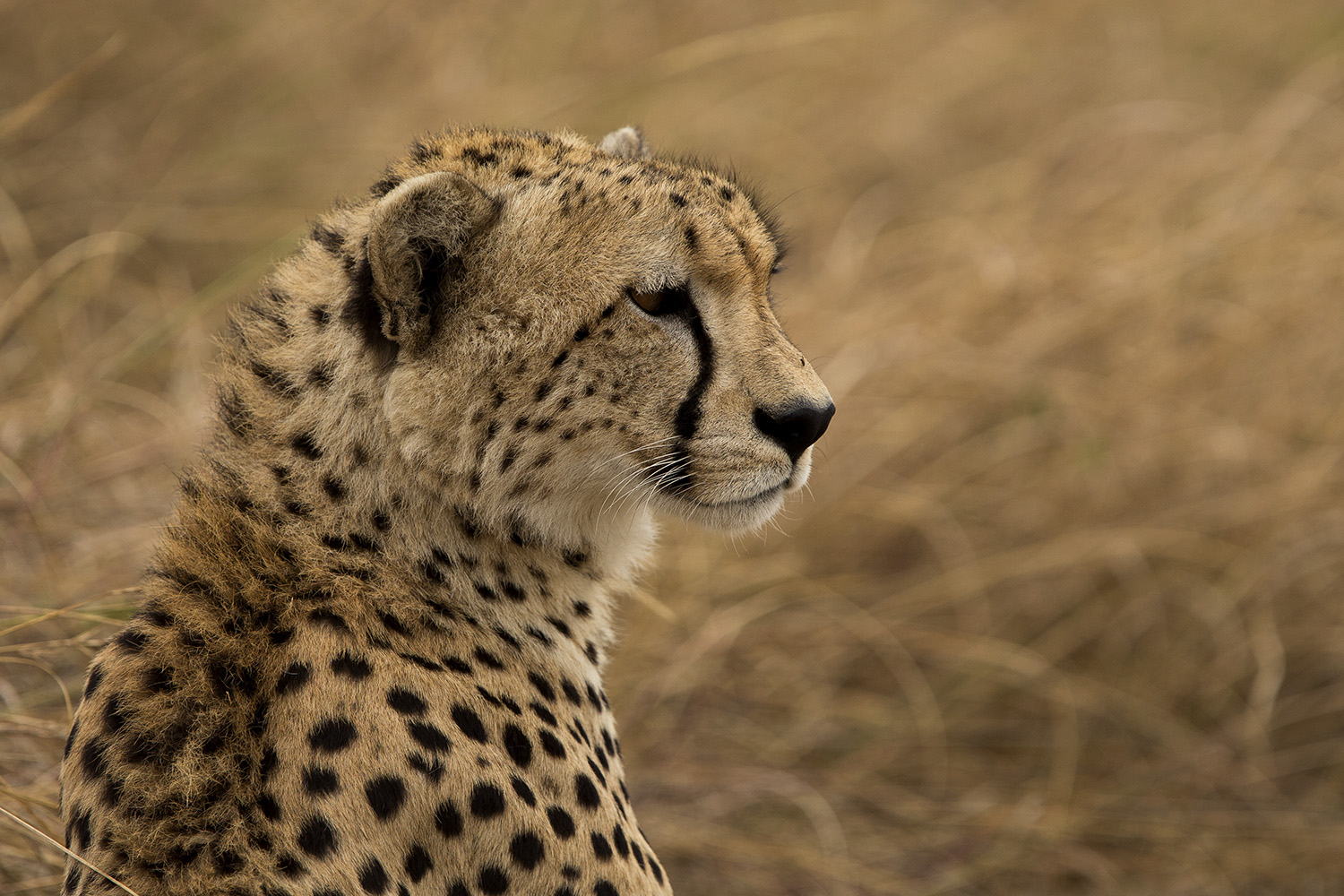
Could this be the same young male cheetah seen two weeks ago in the southern regions of the Mara Triangle? His behaviour suggests that of a young male recently forced by his mother to go it alone. What trials and tribulations await I wonder? [f 4.0, 1/800, ISO 400, +0.33]
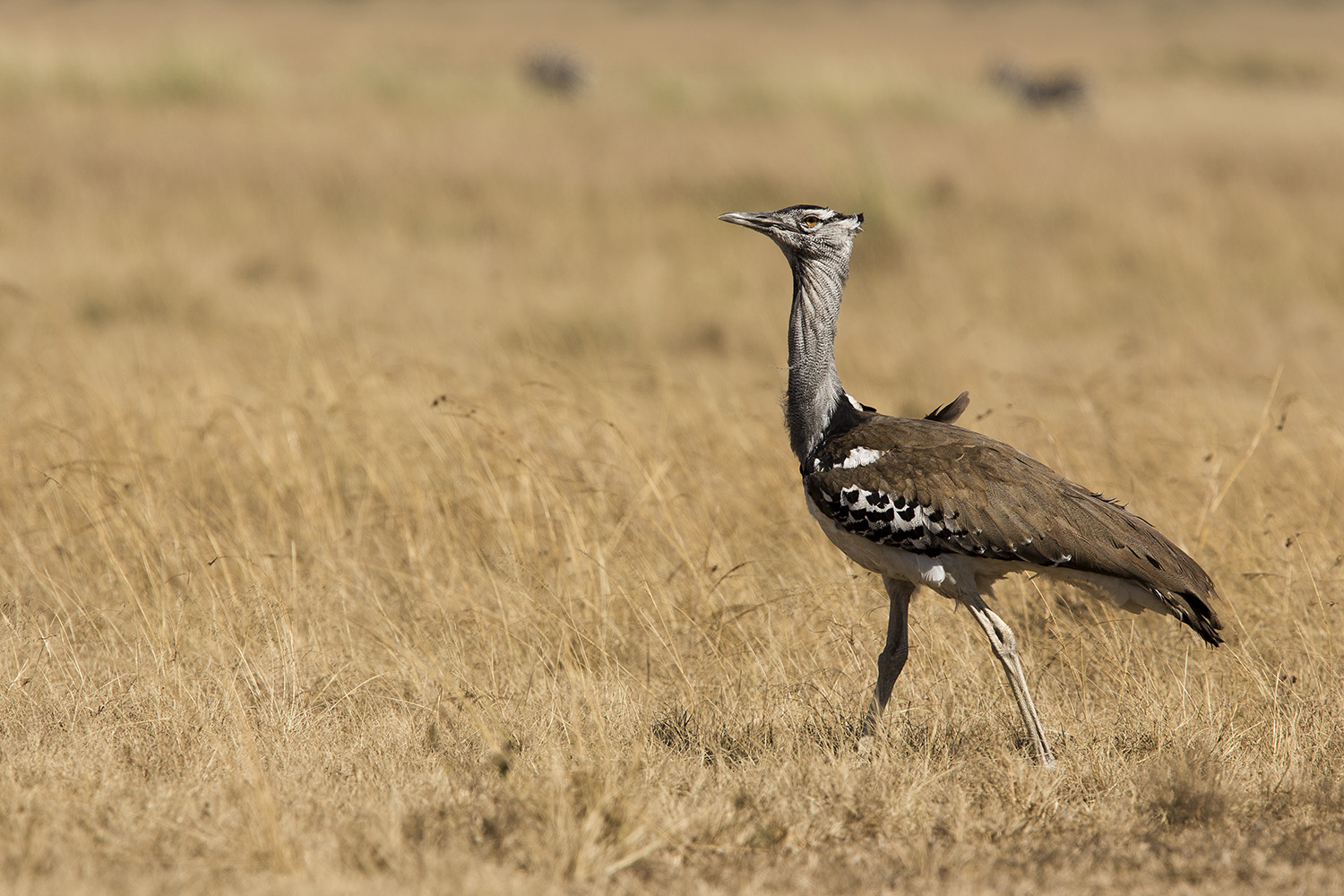
The Kori Bustard - Africa’s largest flying bird and an absolute gem to see here in the Mara. [f 5.6, 1/1000, ISO 160, +0.67]
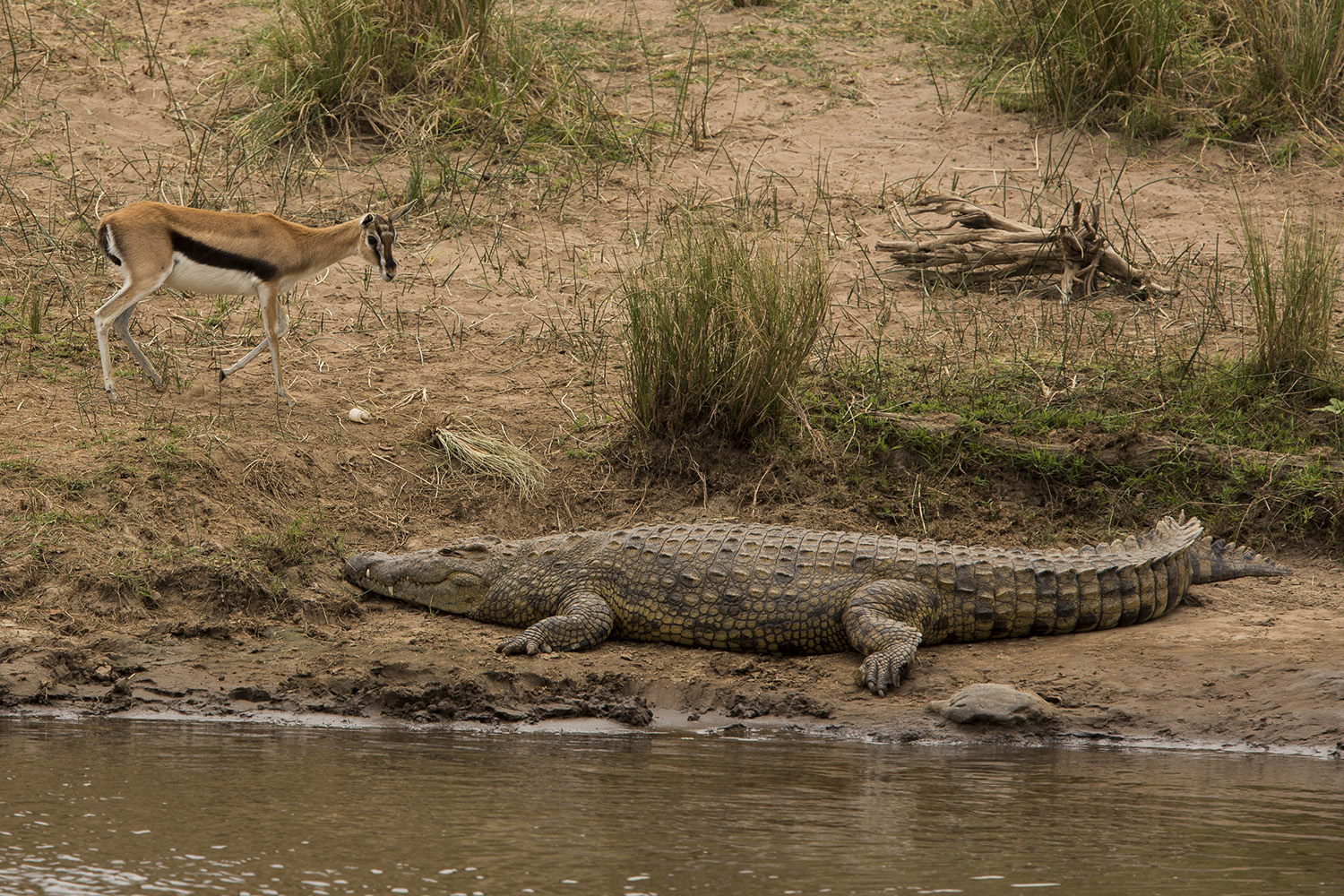
I watched in absolute amazement as this Thomson’s gazelle casually walked past this giant crocodile. Confidence on land that I doubt would be displayed in the water [f 4.5, 1/2500, ISO 400, +0.33]
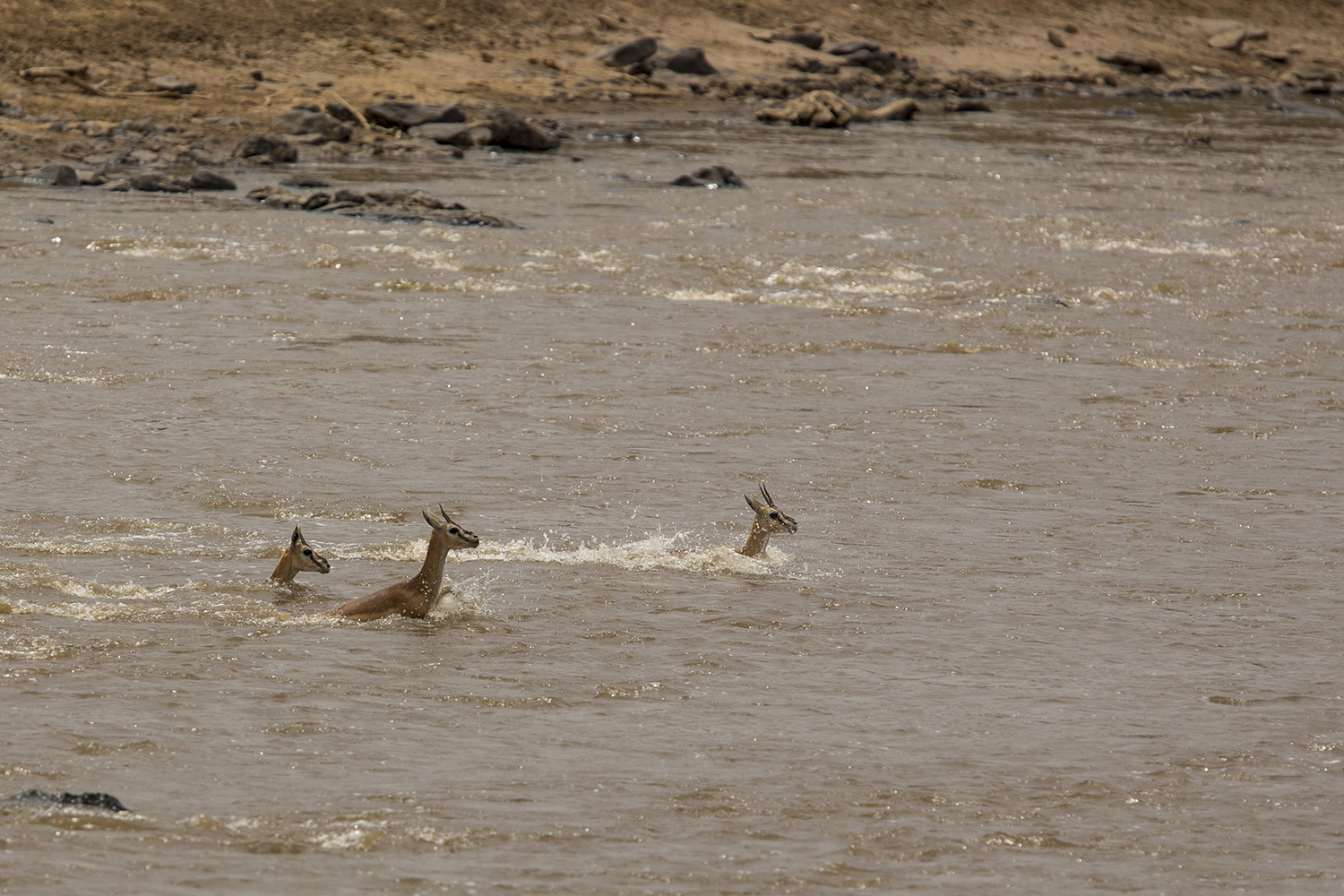
Patience paid off as I got to see a small group of gazelles swim the gauntlet (the brave one from the previous photograph was one of them). Luckily for them, the nearby crocodiles lay comatose in the midday sun. Perhaps that is why most of the river crossings happen in the hottest times of the day? [f 5.0, 1/4000, ISO 400, +0.67]
All photographs taken by Adam Bannister with the exception of Ketan Khambhatta's photograph of the Great Migration.
Filed under: This Week at Angama
Subscribe for Weekly Stories
Comments (3):
8 November 2018
please send me your mails
24 August 2018
Fantastic photos that always take me back to the Mara. Question: Snake Snack photo. What kind of snake and where did the Snack Attack occur?

The Angama Foundation